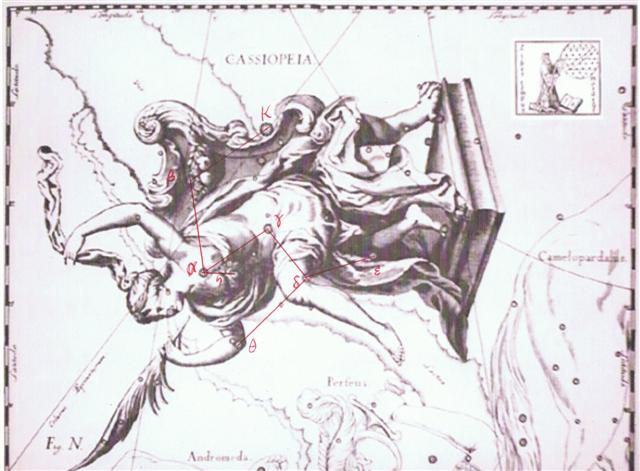6-5. To open the mouth was of primary importance, this was necessary for
a newborn person because he had quickly to breath in air in order to keep
on living.
Kua vaha. November 12 (*236)
→ *136 (August 4) + *100.
... It was 4 August 1968, and it was the feast day of Saint
Dominic, patron of Santo Domingo Pueblo, southwest of Santa Fe.
At one end of the hot, dusty plaza, a Dominican priest watched
nervously as several hundred dancers arranged in two long rows
pounded the earth with their moccasined feet as a mighty,
collective prayer [ui] for rain, accompanied by the
powerful baritone singing of a chorus and the beat of drums. As
my family and I viewed this, the largest and in some ways the
most impressive Native American public ceremony, a tiny cloud
over the Jémez Mountains to the northwest got larger and larger,
eventually filling up the sky; at last the storm broke, and the
sky was crisscrossed by lightning and the pueblo resounded with
peals of rolling thunder ...
|
N |
ALCYONE |
*56 |
136 |
|
S |
TANIA AUSTRALIS |
*156 |
236 |
|
Febr 4 |
35 |
+ 365 = |
400 |
|
May 15 |
135 |
500 |
|
May 12 (32 + 100) |
13 |
14
(460 + 39) |
15 (500)
→ Febr
4 (*320) |
|
Nov 10 (314
→
π) |
11 →
August 3 (235) |
12
(*236 →
8 * 29½) |
13 (500 - 183) |
 |
 |
 |
 |
|
Ea6-2 |
Ea6-3
(181) |
Ea6-4 |
Ea6-5 |
|
vaha mea |
koia |
kua
vaha |
kiore
→ ki 'ore |
|
Vaha.
Hollow; opening; space between the fingers (vaha
rima); door cracks (vaha papare). Vahavaha,
to fight, to wrangle, to argue with abusive words.
Vanaga. 1. Space, before T; vaha takitua,
perineum. PS Mgv.: vaha, a space, an open place.
Mq.: vaha, separated, not joined. Ta.: vaha,
an opening. Sa.: vasa, space, interval. To.:
vaha, vahaa, id. Fu.: vasa, vāsaà,
id. Niuē: vahā.
2. Muscle, tendon; vahavaha,
id. Vahahora
(vaha 1 -
hora 2),
spring. Vahatoga
(vaha 1 -
toga 1),
autumn. 3. Ta.: vahavaha,
to disdain, to dislike. Ha.: wahawaha,
to hate, to dislike. Churchill.
Mea.
1. Tonsil, gill (of fish). 2. Red (probably
because it is the colour of gills); light red, rose;
also meamea. 3. To grow or to exist in abundance
in a place or around a place: ku-mea-á te maîka,
bananas grow in abundance (in this place); ku-mea-á
te ka, there is plenty of fish (in a stretch of the
coast or the sea); ku-mea-á te tai, the tide is
low and the sea completely calm (good for fishing);
mau mea, abundance. Vanaga. 1. Red;
ata mea, the
dawn. Meamea,
red, ruddy, rubricund, scarlet, vermilion, yellow;
ariga meamea,
florid; kahu meamea
purple; moni meamea,
gold; hanuanua meamea,
rainbow; pua ei meamea,
to make yellow.
Hakameamea, to redden, to make yellow. PS
Ta.: mea,
red. Sa.: memea,
yellowish brown, sere. To.:
memea, drab. Fu.:
mea, blond,
yellowish, red, chestnut. 2. A thing, an object,
elements (mee);
e mea,
circumstance; mea ke,
differently, excepted, save, but;
ra mea, to
belong; mea rakerake,
assault; ko mea,
such a one; a mea nei,
this; a mea ka,
during; a mea,
then; no te mea,
because, since, seeing that;
na te mea,
since; a mea era,
that; ko mea tera,
however, but. Hakamea,
to prepare, to make ready. P Pau., Mgv., Mq., Ta.:
mea, a thing.
3. In order that, for. Mgv.:
mea, because,
on account of, seeing that, since. Mq.:
mea, for. 4.
An individual; tagata
mea, tagata
mee, an individual. Mgv.:
mea, an
individual, such a one. Mq., Ta.:
mea, such a
one. 5. Necessary, urgent;
e mea ka, must
needs be, necessary; e
mea, urgent. 6. Manners, customs. 7. Mgv.:
ako-mea, a
red fish. 8. Ta.: mea,
to do. Mq.: mea,
id. Sa.: mea,
id. Mao.: mea,
id. Churchill.
MARCH 25 (84)
→ 84 + 64 = 148 (May
28) → 132 (May 12) where Nusakan should be at
the Full Moon + 16 (change from waiting to return to
visibility to true heliacal dates).
|
|
INVISIBLY CLOSE TO
THE SUN: |
|
No star listed (52) |
ψ
Persei (53.1)
ACRUX (α
CRUCIS) |
δ
Persei (54.7) |
Al Thurayya-27 (Many Little
Ones) /
Krittikā-3 (Nurses of Kārttikeya)
/
TAU-ONO (Six Stones)
ATIKS =
ο
Persei,
RANA (Frog) =
δ
Eridani
(55.1),
CELAENO (16 Tauri), ELECTRA (17), TAYGETA (19),
ν
Persei (55.3), MAIA (20), ASTEROPE (21), MEROPE (23)
(55.6) |
|
REVERSED NAKSHATRA
→ CLOSE TO THE FULL MOON: |
|
NUSAKAN (Pauper's Bowl) = β Cor. Bor.
(234.0), κ¹ Apodis (234.3), ν Bootis (234.7), ζ Librae
(234.9) |
θ Cor. Borealis (235.3), γ Lupi (235.6),
GEMMA = α
Cor. Bor.,
ZUBEN ELAKRAB = γ Librae, QIN = δ Serpentis, ε Tr.
Austr.
(235.7), μ Cor. Borealis (235.8), υ Librae (235.9)
CAPH
(β Cassiopeiae)
SIRRAH (α Andromedae) |
φ Bootis (236.2), ω Lupi, τ Librae (236.3), ψ¹ Lupi
(236.7), ζ Cor. Borealis (236.9) |
κ
Librae (237.2),
ι
Serpentis (237.4),
ψ²
Lupi,
ρ
Oct.
(237.5), γ Cor. Borealis, η Librae (237.7), COR
SERPENTIS = α Serpentis
(237.9)
*196.0 = *237.4 - *41.4 |
|
... In other words,
the ancient Druidic religion based on the oak-cult will
be swept away by Christianity and the door - the god
Llyr - will languish forgotten in the Castle of
Arianrhod, the Corona Borealis. This helps us to
understand the relationship at Rome of Janus and the
White Goddess Cardea who is ... the Goddess of Hinges
who came to Rome from Alba Longa. She was the hinge on
which the year swung - the ancient Latin, not the
Etruscan year - and her importance as such is recorded
in the Latin adjective cardinalis - as we say in
English 'of cardinal importance - which was also applied
to the four main winds; for winds were considered as
under the sole direction of the Great Goddess until
Classical times ... Notably the Full Moon would ideally be at
the right ascension line of Nusakan
(*234.0) in Corona Borealis in the night
before Sirrah (*0.5) culminated at
21h. My list of star culminations contains
only a selected few of all the stars in my
star list, but we can assume the culmination
(at 21h) of Caph (*0.5) also occurred
in November 11.
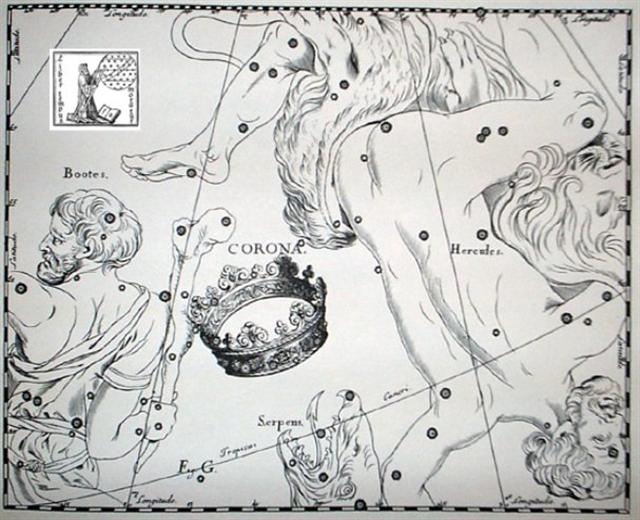 |
|
ALCYONE (*56 → 2 *
28) |
a1 |
32 |
32 |
|
BETELGEUZE (*88) |
a2 |
33 |
65 |
|
NAOS (*121
→
11 * 11) |
a3 |
35 |
100 |
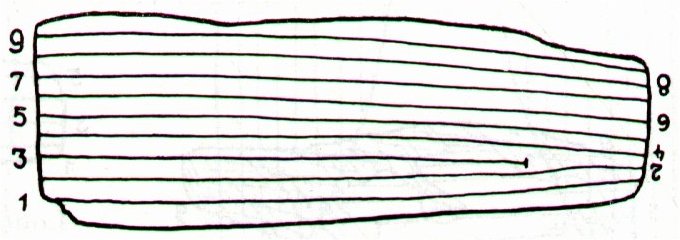 |
|
TANIA AUSTRALIS (*156
→ 2 * 78) |
a4 |
36 |
78 |
|
PORRIMA (*191) |
a5 |
42 |
|
NUSAKAN (*156 + *78) |
a6 |
39 |
156 |
|
NASH (*273 → 3 * 91) |
a7 |
39 |
August 4 (*136 → 136 → Alcyone)
was half a year after February
4, and thus the day which south of the equator should correspond
to February 4.
... In February 4 (400) the Full Moon would
ideally reach the right ascension line connecting up to
Dramasa, the south pole star:
...
Far away, the Mangaians of old (Austral Islands, Polynesia), who
kept the precessional clock running instead of switching over to
'signs', claim that only at the evening of the solstitial days
can spirits enter heaven, the inhabitants of the northern parts
of the island at one solstice, the dwellers in the south at the
other ...
*320 (Dramasa) - *236 (November 12) = *54 (May 14).
In August 4 (216) the Sun rose together with
Talitha Australis
(κ at the vertically oriented
and uplifted right front paw of Ursa Major) and this was 20
days before the Southern Gazelle,
Tania Australis
(μ at the flat uplifted
left back paw). Kappa comes
before my.


80 (March 21 = the northern spring equinox according to the
Gregorian calendar) + 20 = 100 (April 10)
→ the last
glyph in line Ea3.
|
May 16 (136) |
17 |
18 |
19
→
Febr 8 (39, *324) |
20 (40 + 100) |
|
... On February 9
the Chorti Ah K'in, 'diviners', begin the
agricultural year. Both the 260-day cycle and the
solar year are used in setting dates for religious
and agricultural ceremonies, especially when those
rituals fall at the same time in both calendars. The
ceremony begins when the diviners go to a sacred
spring where they choose five stones with the proper
shape and color. These stones will mark the five
positions of the sacred cosmogram created by the
ritual. When the stones are brought back to the
ceremonial house, two diviners start the ritual by
placing the stones on a table in a careful pattern
that reproduces the schematic of the universe. At
the same time, helpers under the table replace last
year's diagram with the new one. They believe that
by placing the cosmic diagram under the base of God
at the center of the world they demonstrate that God
dominates the universe. The priests place the stones
in a very particular order. First the stone that
corresponds to the sun in the eastern, sunrise
position of summer solstice is set down; then the
stone corresponding to the western, sunset position
of the same solstice. This is followed by stones
representing the western, sunset position of the
winter solstice, then its eastern, sunrise position.
Together these four stones form a square. They sit
at the four corners of the square just as we saw in
the Creation story from the Classic period and in
the Popol Vuh. Finally, the center stone is placed
to form the ancient five-point sign modern
researchers called the quincunx ...
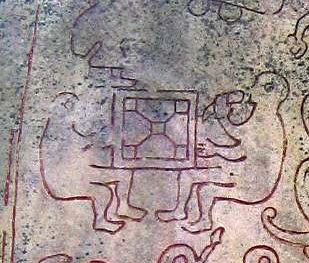 |
|
Nov 14 |
15 |
16 (320) |
17 |
18 |
 |
 |
 |
 |
 |
|
Ea6-6 (184) |
Ea6-7 |
Ea6-8 |
Ea6-9 |
Ea6-10 (188) |
|
kua tuu ko raua |
kiore
→ ki 'ore |
oho - te henua |
manu kara vera |
te ahi |
|
Kará. Wing of bird. Karaga,
uproar, row: he-tagi te karaga. Karatu'u,
to remain upright (said of a spinning top).
Karava, low cave; hiding place under rocks in
the sea (where lobsters hide). Tagata kava -
tagata kakara i te kava, man with smelly
armpits.Vanaga. Wing. Karatia, grace.
Karava: 1. Cave. 2. To strain to hit a mark.
Karavarava, manava karavarava, colic.
Churchill. Pau.: Kara, flint. Mgv.: kara,
a heavy stone. Ta.: ará, a black flint. Ma.:
kara, basalt. Karaea, karamea
clay. Ta.: araea, id. Mq.: kaaea, red
ochre. Ma.: karamea, id. Karaga-puruga,
mother-in-law. Ta.: purua, parent-in-law.
Karaini, bait, decoy, allurement. Ta.: arainu,
bait, lure. Karapoga, throat, gullet.
Churchill. Mgv.: Karaga, a cry. Sa.:
'alaga, id. Ma.: karanga, id. Karakara,
to smell slightly a pleasant odor. Ta.: aara,
good odor. Mq.: kakaa, to exhale a pleasant
odor. Sa.: 'alala, to smell of hot meat. Ma.:
kakara, savory. Karako, a bird. Mq.:
kaako, id. Karapihi, suckers of the
octopus. Mq.: karapihi, kaapihi, id.
Karava, large veins which appear under
strain. Sa.: 'alava, veins, fibers.
Churchill. Mq.: Karakara, a bird. Ha.:
alaala, id. Churchill.
Vera mahana, hot. Moa
gao verapaka, chicken with bald neck.
Vera paka, scorching hot. Tuavera,
the last breadfruit spoiled by the wind. Ta.:
tuavera, burnt by the sun. Churchill.
Huero veravera,
burning ray.
|
|
INVISIBLY
CLOSE TO THE SUN: |
|
Hairy Head-18 (Cockerel)
/
Temennu-3 (Foundation Stone)
ALCYONE
(56.1),
PLEIONE (28 Tauri), ATLAS (27 Tauri)
(56.3) |
MENKHIB (Next to the Pleiades =
ζ
Persei
(57.6)
PORRIMA (γ Virginis) |
ZAURAK (Boat) = γ Eridani
(58.9) |
λ Tauri (59.3), ν Tauri (59.9) |
4h (60.9)
JĪSHUĬ = λ Persei (60.7)
COR CAROLI (α Canum Ven.) |
|
REVERSED
NAKSHATRA → CLOSE TO THE FULL MOON: |
|
π
Cor. Borealis,
UNUK ELHAIA (Necks of the Serpents) =
λ
Serpentis
(238.1),
CHOW =
β
Serpentis
(238.6) |
κ
Serpentis (239.3),
δ
Cor. Borealis,
TIĀNRŪ =
μ
Serpentis
(239.5),
χ
Lupi, (239.6),
ω
Serpentis (239.7),
BA (= Pa) =
ε
Serpentis,
χ
Herculis (239.8).
κ
Cor.
Borealis, ρ Serpentis (239.9) |
λ
Librae (240.0),
β
Tr. Austr. (240.3),
κ
Tr. Austr. (240.4),
ρ
Scorpii (240.8)
*199.0 = *240.4 - *41.4 |
Iklīl al Jabhah-15 (Crown of
the Forehead) /
Anuradha-17 (Following Rādhā)
/
Room-4 (Hare)
ξ
Lupi,
λ Cor. Bor.(241.1),
ZHENG =
γ
Serpentis,
θ
Librae (241.2),
VRISCHIKA =
π
Scorpii
(241.3),
ε
Cor.
Borealis (241.5),
DSCHUBBA
(Front of Forehead) = δ Scorpii
(241.7), η Lupi (241.9) |
υ
Herculis (242.3),
ρ
Cor. Borealis (242.4),
ι
Cor. Borealis (242.5),
θ
Draconis (242.6),
ξ
Scorpii (242.7)
SCHEDIR
(Breast) α Cassiopeiae
*201.0 = *242.4 - *41.4 |
6
days after kua vaha, when the Full Moon ideally should
be where (presumably) the mouth should be opened (*236), it was
time to begin feeding from the breast of the celestial Mother, the 2nd
necessary requirement for newborns.
... The bereaved and sorrowing Isis, meanwhile, wandering over
the world in her quest - like Demeter in search of the lost
Persephone - came to Byblos, where she learned of the wonderful
tree. And, placing herself by a well of the city, in mourning,
veiled and in humble guise - again like Demeter - she spoke to
none until there approached the well the handmaidens of the
queen, whom she greeted kindly. Braiding their hair, she
breathed upon them such a wondrous perfume that when they
returned and Astarte saw and smelt the braids she sent for the
stranger, took her into the house, and made her the nurse of her
child. The great goddess gave the infant her finger instead of
breast to suck and at night, having placed him in a fire to burn
away all that was mortal, flew in the form of a swallow around
the pillar, mournfully chirping. But the child's mother, Queen
Astarte, happening in upon this scene, shrieked when she spied
her little son resting in the flames and thereby deprived him of
the priceless boon. Whereupon Isis, revealing her true nature,
begged for the pillar and, removing the sarcophagus, fell upon
it with a cry of grief so loud that the queen's child died on
the spot ...
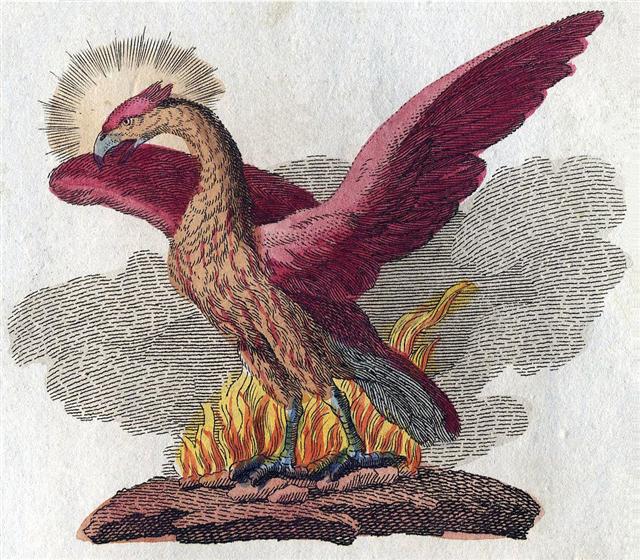
Number 39 seems to have carried a significant
special meaning. I suggest the primary objective might have been
to point to Ju(s)Piter (Father Light). His synodic cycle
required 360 + 39 days.
|
Synodic
cycles: |
|
Mercury |
115.88 →
116 = 4 * 29 |
|
Venus |
583.92 → 584 = 3 * 116 + 8 * 29½ |
|
Earth |
π * 116 →
364.24 |
|
Mars |
779.96 → 780 = 584 + 4 * 49 |
|
Jupiter |
398.88 → 399 = 584 - 185 |
|
Saturn |
378.09 |
|
Uranus |
369.66 → 370 = 584 -
214 |
Kopu. Heart, breast, paunch, belly, entrails; kopu
mau, stomach; kopu takapau nui, big belly;
mamae kopu, bellyache. T Pau., Mgv.: kopu, belly,
paunch. Mq.: kopu, opu, belly, stomach, breast.
Ta.: opu, belly, intestines, spirit, intelligence.
Churchill. Ta.: opu, to rise, of the sun. Ma.:
kopu,
the morning star. Churchill.
|
POLYNESIAN NAMES FOR JUPITER: |
|
Hawaiian Islands |
Society Islands |
Tuamotus |
|
Ikaika
(brilliant). Ikiiki (a goddess, a Hawaiian
month name and therefore probably a fixed star
rather than a planet)
Kaawela
or Kawela ('Burning').
Homanalonalo. Iao
('Of-the-dawn', Jupiter as morning star) |
Ta'urua-of-the-confusion-in-the-sky-with-Hawaii-in-the-rear.
Ta'urua-who-struck-the-zenith-of-the-sky
Ta'urua-who-rises-in-the-path-of-the-rainbow |
Poro-hutu
('Round Hutu' - the name of a tree. The
planet was described as 'distinctly yellow in color
and slow in movement') |
|
New Zealand |
Marquesas |
Pukapuka |
|
Kopu-nui
('Great-paunch';
also given to Saturn. Apparently Jupiter and Saturn
were often confused.
The attendants of
the royal temple at Tahiti were known as
(k)opu-nui, indicating that the word had a
sacred significance.)
Rangawhenua
(see Mars) |
Hua
('Fruit' or 'Egg'; also universally the name for the
full Moon.) |
Tapao
('Hammer' or 'Mallet'; as a morning star)
Tokiva
('Axe-of-space'; when overhead)
Tu-la-lupe
('Day-folded-together'; as evening star)
|
Once upon a time the celestial Fire had been
stolen.
... All was now ready for departure
except that there was no fire in the smithy. The ancestor
slipped into the workshop of the great Nummo, who are
Heaven's smiths, and stole a piece of the sun in the form of
live embers and white-hot iron. He seized it by means of a
'robber's stick' the crook of which ended in a slit, open
like a mouth. He dropped some of the embers, came back to
pick them up, and fled towards the granary; but his
agitation was such that he could no longer find the
entrances. He made the round of it several times before he
found the steps and climbed onto the flat roof, where he hid
the stolen goods in one of the skins of the bellows,
exclaiming: 'Gouyo!', which is to say. 'Stolen!'. The
word is still part of the language, and means 'granary'. It
is a reminder that without the fire of the smithy and the
iron of hoes there would be no crops to store ...
|
Te Taka-pau |
39 variants of uhi - STOLEN by Teke from his brother
Ma'eha [E:58-64] |
|
... Teke said to Oti, 'When you see [ana ui mai
koe] that Maeha is coming out of the house and
is walking [oho ki vaenga] over to the yam
plantation, then two [hokorua, 2] of you
shall look around, enter [uru] into the
house, and take [too] the stone figure (moai
maea) that is lying there.
(Her) name is Te Takapau.' [E:61] |
|
 |
18 |
 |
13 |
 |
7 |
 |
|
SIRRA H
(*0) |
ADHIL (*19) |
MIRA (*33) |
BHARANI (*41) |
|
ALCHITA (*183) |
SPICA (*202) |
KHAMBALIA (*216) |
ZUBEN ELGENUBI
(*224) |
|
0h |
39 (= 3 * 13) =
224 - 183 |
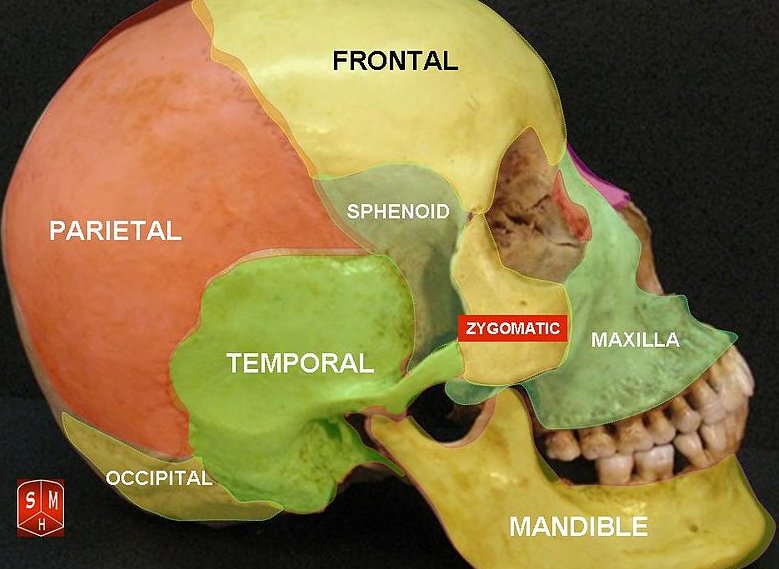
Teke.
Occiput. Teketeke, short (not tall); also:
teke. Vanaga. Teke ki nei, as far as,
until (? tehe 1). Teketeke, crest,
ridge. Churchill.
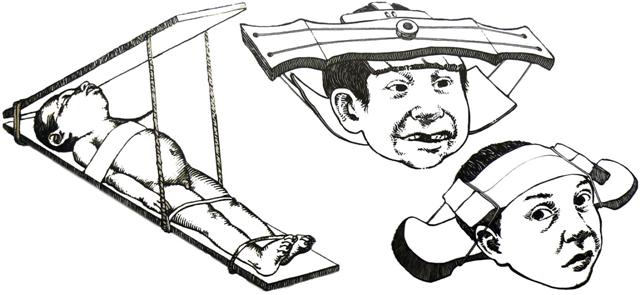
Ma'eha. Brightness, bright,
to lighten, to brighten up; ku ma'eha-á, it
has already lightened up. Vanaga. 1. Light,
brightness; to shine, to be bright, to glimmer, to
glow; maeha mahina, moonshine; maeharaa,
sunrise. Maehamaeha, bright. Hakamaeha,
to brighten. Mq.: maeoeo, bright,
transparent. 2. To get out of the way. 3. Thin,
slender, slight. Churchill. |
The rim of the ancient mammoth bone, we remember, had 39
notches:

... On side B together with the four
edges is a series of notches that are clearly set in an
intentional pattern. The edges contain a total of 39 notches in
groups of 6, 13, 7 and 13. A further 49 notches on side B
are arranged in four vertical lines of 13, 10, 12 and 13
respectively plus a further notch that could be in either of the
middle two lines ...
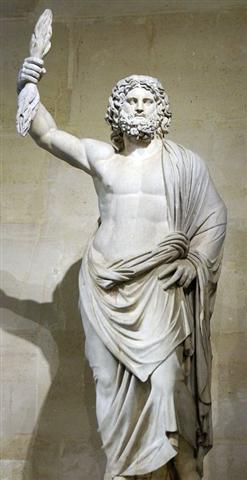
|
